 |
 |
Our enthusiastic and extremely knowledgeable perennials team is here to answer your questions and help you choose the best perennials for your situation. There’s always something in bloom for sun, shade, butterflies, birds or deer resistance as well as a variety of bulbs for your space.
Stroll through our time-tested favorites and introduce yourself to the newest varieties. We garden with perennials too; we love them and it shows!
|
49 found, showing page 2 of 4
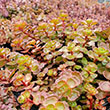
Red blooms. Bronze-red foliage by fall. Evergreen. Groundcover. USDA 4-9

Vibrant blue blooms. Compact, clumping foliage. USDA 4-9

Tall selection forms an upright mound of blue-green leaves. Tiny reddish-brown flower. Winter interest. USDA 4-9
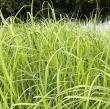
Dark green foliage turns a beautiful dark purple or near black in fall. Tolerates a wide range of soils. Good for erosion control. USDA 4-9
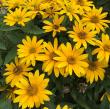
Golden yellow blooms. Compact, upright habit. Heat tolerant. Long bloomer. USDA 4-9
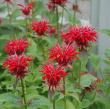
Height: 4 feet
Spacing: 30 inches
Sunlight: full sun partial shade
Hardiness Zone: 3a
Other Names: Bergamot, Oswego Tea
Ornamental Features:
Jacob Cline Beebalm has masses of beautiful clusters of fragrant red flowers at the ends of the stems from mid to late summer, which are most effective when planted in groupings. The flowers are excellent for cutting. Its fragrant pointy leaves remain forest green in color throughout the season.
Landscape Attributes:
Jacob Cline Beebalm is an herbaceous perennial with an upright spreading habit of growth. Its relatively coarse texture can be used to stand it apart from other garden plants with finer foliage.
This plant will require occasional maintenance and upkeep, and should be cut back in late fall in preparation for winter. It is a good choice for attracting bees, butterflies and hummingbirds to your yard, but is not particularly attractive to deer who tend to leave it alone in favor of tastier treats. Gardeners should be aware of the following characteristic(s) that may warrant special consideration: Spreading, Self-Seeding
Jacob Cline Beebalm is recommended for the following landscape applications:
- Mass Planting
- General Garden Use
- Naturalizing And Woodland Gardens
Planting & Growing:
Jacob Cline Beebalm will grow to be about 3 feet tall at maturity, with a spread of 3 feet. When grown in masses or used as a bedding plant, individual plants should be spaced approximately 30 inches apart. It grows at a fast rate, and under ideal conditions can be expected to live for approximately 5 years. As an herbaceous perennial, this plant will usually die back to the crown each winter, and will regrow from the base each spring. Be careful not to disturb the crown in late winter when it may not be readily seen!
This plant does best in full sun to partial shade. It is very adaptable to both dry and moist locations, and should do just fine under typical garden conditions. It is not particular as to soil type or pH. It is highly tolerant of urban pollution and will even thrive in inner city environments. This particular variety is an interspecific hybrid. It can be propagated by division; however, as a cultivated variety, be aware that it may be subject to certain restrictions or prohibitions on propagation.
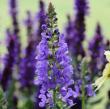
Blue flower spikes. Grey-green foliage. Clumping. USDA 4-9
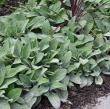
Silvery green foliage. Flowering stems are rare. USDA 4-9
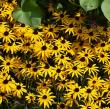
Plant Height: 24 inches
Flower Height: 3 feet
Spacing: 18 inches
Sunlight: full sun
Hardiness Zone: 3b
Other Names: Black Eyed Susan Description:
This vigorous variety has excellent disease and pest resistance; large yellow flowers with narrow petals and dark brown cones in late summer to early fall; ideal for gardens and containers; will freely self sow when seedheads are not picked
Ornamental Features:
Deam's Coneflower has masses of beautiful yellow daisy flowers with dark brown eyes and a orange flare at the ends of the stems from late summer to early fall, which are most effective when planted in groupings. The flowers are excellent for cutting. Its pointy leaves remain dark green in color throughout the season.
Landscape Attributes:
Deam's Coneflower is an herbaceous perennial with an upright spreading habit of growth. Its medium texture blends into the garden, but can always be balanced by a couple of finer or coarser plants for an effective composition.
This is a relatively low maintenance plant, and should be cut back in late fall in preparation for winter. It is a good choice for attracting butterflies to your yard, but is not particularly attractive to deer who tend to leave it alone in favor of tastier treats. Gardeners should be aware of the following characteristic(s) that may warrant special consideration: Self-Seeding
Deam's Coneflower is recommended for the following landscape applications:
- Mass Planting
- General Garden Use
- Container Planting
Planting & Growing:
Deam's Coneflower will grow to be about 24 inches tall at maturity extending to 3 feet tall with the flowers, with a spread of 24 inches. When grown in masses or used as a bedding plant, individual plants should be spaced approximately 18 inches apart. It grows at a fast rate, and under ideal conditions can be expected to live for approximately 15 years. As an herbaceous perennial, this plant will usually die back to the crown each winter, and will regrow from the base each spring. Be careful not to disturb the crown in late winter when it may not be readily seen!
This plant should only be grown in full sunlight. It prefers to grow in average to moist conditions, and shouldn't be allowed to dry out. It is not particular as to soil type or pH. It is highly tolerant of urban pollution and will even thrive in inner city environments. This species is native to parts of North America. It can be propagated by division.
Deam's Coneflower is a fine choice for the garden, but it is also a good selection for planting in outdoor pots and containers. With its upright habit of growth, it is best suited for use as a 'thriller' in the 'spiller-thriller-filler' container combination; plant it near the center of the pot, surrounded by smaller plants and those that spill over the edges. It is even sizeable enough that it can be grown alone in a suitable container. Note that when growing plants in outdoor containers and baskets, they may require more frequent waterings than they would in the yard or garden.
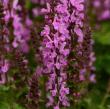
Large deep rose flower spikes. Clumping-grey green foliage. USDA 4-9
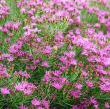
Purple blooms. Fine foliage. Well branched. Compact habit. USDA 4-9
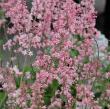
Known for its large, palmate leaves. Tall stalks of pinkish-white flowers in spring. USDA 4-9
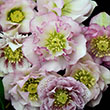
Height: 24 inches
Spacing: 18 inches
Sunlight: partial shade, full shade
Hardiness Zone: 4a
Other Names: Lenten Rose, Winter Rose
Group/Class: Wedding Party Series
Brand: Walters Gardens
Description:
An easy to grow selection producing romantic double blooms in shades of light pink; blooms emerge in late winter and early spring above attractive green foliage; ideal for shade gardens; great as cut flowers or in borders and beds
Ornamental Features:
Wedding Party Flower Girl Hellebore features showy nodding shell pink cup-shaped flowers with pink overtones at the ends of the stems from late winter to early spring. Its glossy pointy compound leaves remain green in color throughout the year.
Landscape Attributes:
Wedding Party Flower Girl Hellebore is an herbaceous evergreen perennial with an upright spreading habit of growth. Its medium texture blends into the garden, but can always be balanced by a couple of finer or coarser plants for an effective composition.
This is a relatively low maintenance plant, and should be cut back in late fall in preparation for winter. Deer don't particularly care for this plant and will usually leave it alone in favor of tastier treats. It has no significant negative characteristics.
Wedding Party Flower Girl Hellebore is recommended for the following landscape applications:
- Mass Planting
- Rock/Alpine Gardens
- Border Edging
- General Garden Use
- Naturalizing And Woodland Gardens
Planting & Growing:
Wedding Party Flower Girl Hellebore will grow to be about 20 inches tall at maturity, with a spread of 24 inches. When grown in masses or used as a bedding plant, individual plants should be spaced approximately 18 inches apart. Its foliage tends to remain dense right to the ground, not requiring facer plants in front. It grows at a medium rate, and under ideal conditions can be expected to live for approximately 5 years. As an evegreen perennial, this plant will typically keep its form and foliage year-round.
This plant does best in partial shade to shade. It does best in average to evenly moist conditions, but will not tolerate standing water. This plant should not require much in the way of fertilizing once established, although it may appreciate a shot of general-purpose fertilizer from time to time early in the growing season. It is not particular as to soil pH, but grows best in rich soils. It is somewhat tolerant of urban pollution, and will benefit from being planted in a relatively sheltered location. This particular variety is an interspecific hybrid, and parts of it are known to be toxic to humans and animals, so care should be exercised in planting it around children and pets. It can be propagated by division; however, as a cultivated variety, be aware that it may be subject to certain restrictions or prohibitions on propagation.

Height: 22 inches
Spacing: 18 inches
Sunlight: partial shade, full shade
Hardiness Zone: 4a
Other Names: Lenten Rose, Winter Rose
Group/Class: Honeymoon Series
Brand: Proven Winners
Description:
This attractive variety produces bushy mounds of thick evergreen leaves; flower stalks bear showy, cup shaped blooms in shades of pink with purple edges; a great selection for shade gardens
Ornamental Features:
Honeymoon Paris In Pink Hellebore features showy nodding pink cup-shaped flowers with purple edges at the ends of the stems from late winter to early spring. Its attractive serrated oval compound leaves remain dark green in color throughout the year.
Landscape Attributes:
Honeymoon Paris In Pink Hellebore is an herbaceous evergreen perennial with an upright spreading habit of growth. Its medium texture blends into the garden, but can always be balanced by a couple of finer or coarser plants for an effective composition.
This is a relatively low maintenance plant, and should be cut back in late fall in preparation for winter. Deer don't particularly care for this plant and will usually leave it alone in favor of tastier treats. It has no significant negative characteristics.
Honeymoon Paris In Pink Hellebore is recommended for the following landscape applications:
- Mass Planting
- Rock/Alpine Gardens
- Border Edging
- General Garden Use
- Naturalizing And Woodland Gardens
Planting & Growing:
Honeymoon Paris In Pink Hellebore will grow to be about 18 inches tall at maturity, with a spread of 24 inches. When grown in masses or used as a bedding plant, individual plants should be spaced approximately 18 inches apart. Its foliage tends to remain dense right to the ground, not requiring facer plants in front. It grows at a medium rate, and under ideal conditions can be expected to live for approximately 5 years. As an evegreen perennial, this plant will typically keep its form and foliage year-round.
This plant does best in partial shade to shade. It does best in average to evenly moist conditions, but will not tolerate standing water. It is not particular as to soil pH, but grows best in rich soils. It is somewhat tolerant of urban pollution, and will benefit from being planted in a relatively sheltered location. This particular variety is an interspecific hybrid, and parts of it are known to be toxic to humans and animals, so care should be exercised in planting it around children and pets. It can be propagated by division; however, as a cultivated variety, be aware that it may be subject to certain restrictions or prohibitions on propagation.
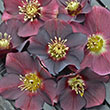
Deep-magenta blooms accented with golden-yellow centers. USDA 4-9
49 found, showing page 2 of 4






